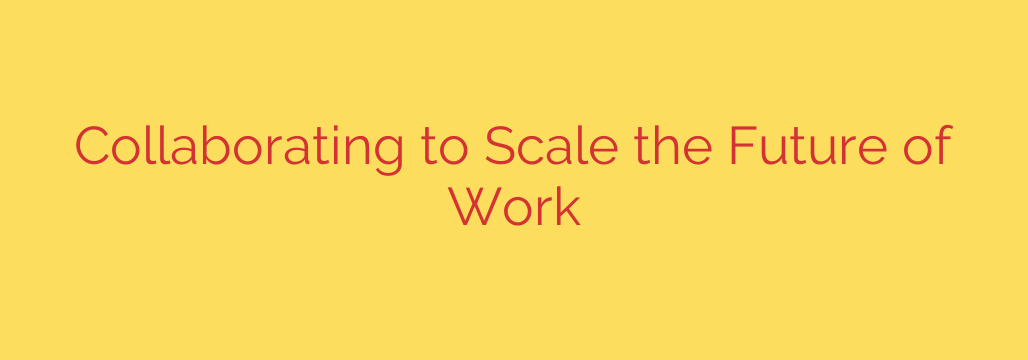
Beyond the Firewall: A Modern Cybersecurity Strategy for the Hybrid Workplace
The shift to remote and hybrid work is no longer a trend—it’s the new reality. While this flexibility offers incredible benefits for productivity and employee satisfaction, it has fundamentally broken traditional security models. The old concept of a secure corporate network, a digital “castle-and-moat” where everything inside is trusted and everything outside is not, is officially obsolete.
Today, your employees, data, and applications are everywhere. This distributed environment creates a massive attack surface, and protecting it requires a new way of thinking. The future of work demands a security strategy that is intelligent, agile, and built for a world without perimeters.
The New Perimeter is Identity
In a borderless work environment, the only consistent element is the user. This is why the foundational principle of modern security is simple yet powerful: identity is the new perimeter. Instead of trusting a user based on their location or network connection, security must be centered on verifying who they are, what they should have access to, and the context of their request.
This approach, known as a Zero Trust architecture, operates on a “never trust, always verify” model. It assumes that threats can exist both outside and inside the network. Every access request, regardless of its origin, must be strictly authenticated, authorized, and encrypted before access is granted.
The Core Pillars of a Modern Security Framework
A robust Zero Trust strategy isn’t about a single product; it’s an integrated ecosystem of security layers working in harmony. To effectively protect your organization, you must focus on four critical pillars.
1. Strong Identity and Access Management (IAM)
Everything starts with validating who is accessing your resources. A strong IAM solution serves as the front door to your digital ecosystem. By leveraging tools like Single Sign-On (SSO) and Multi-Factor Authentication (MFA), you can provide seamless yet secure access for legitimate users while creating significant barriers for attackers. Verifying user identity is the non-negotiable first line of defense in any Zero Trust model.
2. Comprehensive Endpoint Security
Your employees’ laptops, tablets, and mobile phones are the new endpoints of your network. Each device is a potential entry point for a threat actor. Modern endpoint security goes beyond traditional antivirus software, providing real-time threat detection, investigation, and response capabilities. Your organization’s security is only as strong as its most vulnerable device. Ensuring every endpoint is monitored and protected is crucial for preventing breaches from spreading.
3. Secure Access to the Cloud (SASE)
With applications and data now residing in the cloud, you need a way to secure access to them, no matter where your users are. This is where a Secure Access Service Edge (SASE) model comes in. SASE combines networking and security services into a unified, cloud-native platform. It ensures that all traffic to cloud apps, websites, and private data centers is inspected and secured according to your company’s policies. Data no longer lives inside your office; your security must follow it to the cloud.
4. Protection Against Human-Centric Threats
Attackers know that the easiest way into an organization is often through its people. Phishing, business email compromise (BEC), and social engineering attacks are more sophisticated than ever. A critical security pillar involves protecting your primary communication channel: email. Modern email security solutions can identify and block malicious messages before they reach an employee’s inbox, while also providing training to help users spot potential threats. Over 90% of data breaches start with a human element, making this a critical area to fortify.
Bringing It All Together with Automation
These pillars are powerful on their own, but their true strength is unlocked when they work together. An integrated security platform allows these different systems to share intelligence and automate responses.
Imagine this scenario:
- Your IAM system detects a suspicious login attempt from an unusual location.
- It automatically signals your endpoint security tool to quarantine the user’s device.
- Simultaneously, it instructs your SASE platform to block the user’s access to sensitive cloud applications.
- Finally, your email security system is alerted to monitor for any related phishing activity.
This entire process can happen in seconds, without human intervention. Automating security responses across your tools is crucial for scaling protection and reacting to threats at machine speed.
Actionable Steps for a More Secure Future
Securing the modern workplace is a journey, not a destination. Here are five steps you can take to strengthen your security posture:
- Adopt a Zero Trust Mindset: Shift your organization’s culture from implicit trust to explicit verification for all users and devices.
- Make Identity Your Cornerstone: Prioritize implementing and strengthening your IAM controls, especially MFA.
- Invest in Integrated Solutions: Choose security tools that are designed to communicate and share data through APIs, creating a unified defense system.
- Educate and Empower Your People: Implement continuous security awareness training to turn your employees from potential targets into a line of defense.
- Embrace Automation: Use Security Orchestration, Automation, and Response (SOAR) capabilities to connect your tools and automate routine defense tasks, freeing up your team to focus on strategic threats.
The future of work is flexible, distributed, and cloud-powered. By moving beyond outdated security models and embracing an integrated, identity-first strategy, you can enable your organization to thrive securely in this new era.
Source: https://feedpress.me/link/23532/17121582/scaling-the-future-of-work-together








